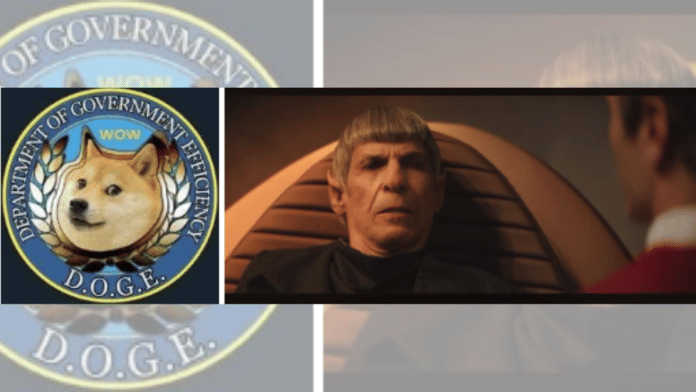Thank you dear subscribers, we are overwhelmed with your response.
Your Turn is a unique section from ThePrint featuring points of view from its subscribers. If you are a subscriber, have a point of view, please send it to us. If not, do subscribe here: https://theprint.in/
The Department of Government Efficiency (DOGE) represents a transformative opportunity to modernize governance by addressing inefficiencies, improving resource allocation, and delivering better services to citizens. Drawing inspiration from private-sector methodologies, DOGE can leverage cutting-edge technologies like Value Stream Management Platforms (VSMP), AI/ML-driven insights, and Unified Modeling Language (UML) for business process re-engineering. Additionally, the wisdom of retired mentors and strategic departmental consolidations can pave the way for unprecedented governmental efficiency.
Value Stream Management Platforms (VSMP) for Governance
VSMPs, a new staple in the private sector, offer unparalleled end-to-end visibility of workflows. These platforms enable organizations to map, monitor, and optimize processes, ensuring that every task contributes to overarching objectives. For DOGE, integrating VSMPs into departmental workflows can identify bottlenecks, eliminate redundancies, and create streamlined processes.
VSMP dashboards can visualize metrics such as cycle times, costs, and resource utilization across departments, providing real-time insights. For example, tracking the efficiency of grant processing in one department could reveal areas where automation or resource reallocation might significantly reduce delays. These platforms are also instrumental during mergers and acquisitions (M&A) of departments, where they can monitor integration milestones and measure pre- and post-consolidation efficiencies.
Harnessing Retired Mentors for Governance
Governance thrives on experience. Retired executives and bureaucrats represent an untapped reservoir of wisdom.
These mentors could collaborate with AI tools to ensure informed decision-making. For instance, while AI provides data-driven recommendations, mentors can contextualize those insights with their experiential knowledge, creating a perfect balance between innovation and pragmatism. Additionally, offering blockchain-based incentives like DOGECoin tokens to these mentors could ensure sustained participation while aligning rewards with measurable governance improvements.
AI/ML for Decision-Making and Risk Management
Artificial intelligence (AI) and machine learning (ML) have transformed private-sector operations, and their potential in governance is equally immense. DOGE can use AI/ML to:
- Analyze Data: Predict trends and resource needs based on historical data.
- Automate Tasks: Streamline repetitive processes like compliance checks, freeing employees for strategic work.
- Enhance Risk Management: Identify vulnerabilities and potential inefficiencies during departmental mergers.
For example, during a merger of two government departments, AI-powered tools could assess compatibility in workflows, data systems, and cultural practices, flagging areas requiring immediate attention. This predictive capability reduces the risks associated with large-scale integration efforts.
UML for Process Re-Engineering
Unified Modeling Language (UML) is an invaluable tool for visualizing and re-engineering complex processes. For DOGE, UML can map out existing workflows, identify inefficiencies, and design optimized systems.
Steps for UML Application in DOGE
- Process Mapping: UML activity diagrams can represent key departmental workflows, such as budget approvals or public service delivery.
- Data Structuring: UML class diagrams can model the data flow between systems, ensuring consistency and eliminating redundancies.
- Scenario Simulation: UML sequence diagrams allow DOGE to simulate how processes respond to different scenarios, such as a sudden surge in demand for a specific service.
By creating a clear blueprint of existing and proposed processes, DOGE can ensure smoother transitions during departmental reorganizations.
Merging and Consolidating Departments
One of DOGE’s core mandates is likely to include merging overlapping departments to reduce redundancies and improve service delivery. This requires meticulous planning, grounded in private-sector M&A best practices.
Key Steps for Departmental M&A
- Desktop Diligence: Before formal consolidation, DOGE should conduct a high-level assessment to identify compatibility in workflows, data systems, and objectives.
- Stakeholder Engagement: Engaging employees at all levels ensures transparency and identifies challenges early.
- Technology Integration: Use VSMPs and cloud-based solutions to harmonize systems across departments.
- Cultural Alignment: Retired mentors can play a key role in bridging cultural gaps between departments, ensuring a smoother transition.
For example, consolidating two procurement departments might reveal opportunities to centralize vendor management systems, reducing duplication and achieving economies of scale.
A Vision for the Future
DOGE has the potential to revolutionize governance by applying the principles of process optimization, technological innovation, and experiential mentorship. By combining modern tools like VSMPs, AI/ML, and UML with the wisdom of retired leaders, DOGE can set a global benchmark for efficient, responsive, and citizen-centric government operations.
This holistic approach doesn’t just reduce costs; it transforms governance into a value-driven system that prioritizes outcomes over bureaucracy. The integration of these strategies ensures that DOGE is not merely an initiative but a legacy of innovation and efficiency in public service.
Akshay Sharma is a media and tech consultant, recognized for his extensive work with regulatory bodies such as Ofcom, FCC, and CRTC. As a former smartphone CTO and Value Stream Management CTO on Governance Platforms, Akshay serves as Chief Technology Evangelist at Accure.AI. His views are personal.
These pieces are being published as they have been received – they have not been edited/fact-checked by ThePrint.


